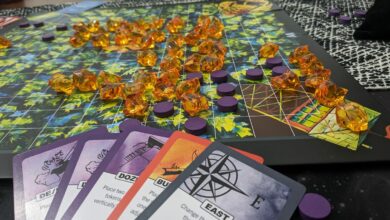Enchanted by the beauty of Bengal on a journey down the Hooghly River: eight days of bright colours, festivities, history and spicy air

My great-uncle Evelyn told me, ‘Did you know that your great-uncle Charles was eaten four times by Johann Zoffany?’ As a boy I never tired of hearing how my ancestor, returning from Calcutta (Kolkata) with the great artist, was shipwrecked in the Bay of Bengal. Being the youngest, and therefore the juiciest, he was devoured by his fellow passengers.
But now that we were certain that the family story would not repeat itself, my wife and I took a more leisurely trip up the Hooghly River, a tributary of the mighty Ganges, aboard ABN Rajmahal. The riverboat had been chartered by Ibex Expeditions and was led by its founders, explorer Mandip Singh Soin and his indomitable wife, Anita.
Their company is named after the Himalayan mountain goat that “goes where others can’t,” so this was no ordinary river cruise, but a collection of surprises that slowly unfolded over eight days.
The first (and last) night we spent at The Park hotel in Kolkata. We dined in grandeur nearby at the Glenburn, where we met our companions, a mix of professionals from academia, business and the arts, even a top civil servant.
As we headed upriver, our good fortune became all too apparent. Although Rajmahal was not pretty or sleek on the outside, it felt remarkably comfortable.

Nicholas Courtney boards the ABN Rajmahal (pictured above) for a leisurely cruise along the Hooghly River, a tributary of the Ganges

Nicholas begins his slow journey in Kolkata and the boat passes under the city’s Howrah Bridge (above)
We slowly left Kolkata and drove under the Howrah Bridge. It is said that the equivalent of the entire adult population of New Zealand crosses the bridge every day.
We disembarked at Barrackpore and walked to Flagstaff House, the original summer headquarters of the British in India. The grounds are a fitting burial place for the colonial statues that have been removed from their high pedestals in Kolkata.
Continuing the colonial theme, we visited Chandernagore, the former French colony with wide boulevards and Empire-style buildings, such as the magnificent Dupleix Palace, now a museum with faded exhibits. I challenge anyone not to get caught up in the history and culture of this area of West Bengal. In the village of Hooghly, an ordinary building hides a large courtyard flanked by vaulted cloisters, a large swimming pool and a clock tower.

Nicholas explores ‘a vast complex of magnificent Shiva temples’ arranged in ‘two concentric rings’ (pictured above) in Kalna
In Kalna the intricacies of producing fine muslin were explained against the click of looms as weavers produced their 2in (5cm) of cloth a day. Others spun raw cotton into thread.
An e-tuk tuk ride took us to another treat – a vast complex of beautiful Shiva temples. In front of one of these stands the Mother of India tree –– five species growing as one. Across the road are the 108 terraced temples in two concentric rings, and then a vast temple unfolds that would dwarf St. Peter’s in Rome like a giant Fabergé Easter egg.
We considered ourselves travellers, sailing the Hooghly far from the usual tourist trail, and the locals seemed genuinely happy to see us.

‘The Kathgola Palace (pictured above), a neoclassical mansion built by a Jain banking family, followed the visit to the Kathgola Mosque, with its pure, simple beauty,’ says Nicholas
The river is narrow, so we could enjoy life on both banks – a flock of whistling ducks or a lone kingfisher, rice fields worked by women in bright saris, villages. One was Matiari, where barefoot workers poured molten copper into molds while others fed the rods into rolling mills. Our ears were filled with the sound of hammering as pots and bowls were made by hand from sheet metal.
On land, e-tuk tuks took us to the site of the Battle of Plassey, where Robert Clive defeated the forces of the Nawab of Bengal, Siraj-ud-Daulah, in 1757 to establish British control of the region. It is marked by a fine obelisk and a bust of Siraj.
More culture lay further afield at Hazarduari Palace in Murshidabad, built by Colonel Duncan MacLeod in the 1830s and resembling Buckingham Palace. The museum was intriguing but had confusing signage. I loved the painting of ‘Cleo Patra’.
The Kathgola Palace, a neoclassical mansion built by a Jain banking family followed the visit to the Kathgola Mosque, with its pure, simple beauty. That evening there was a barbecue on the upper deck of the boat.
On our last day we visited Gaur, the former capital of Bengal from the 13th century on the border with Bangladesh. Here we were treated to two more mosque complexes and the octagonal tower Firoz Minar from the 15th century.
Our river adventure ended in Farakka and a four-hour train ride back to Kolkata. We had enjoyed a journey of the senses – the tinnabulation of the metal workers; the bright colours of India (including Mandip’s turbans); the sheer muslin; the feasts at the Rajmahal and the sweet smells of the spice-laden air. We were truly blessed.

Nicholas visited the Buckingham Palace-like Hazarduari Palace (pictured above) in Murshidabad, built by Colonel Duncan MacLeod in the 1830s




